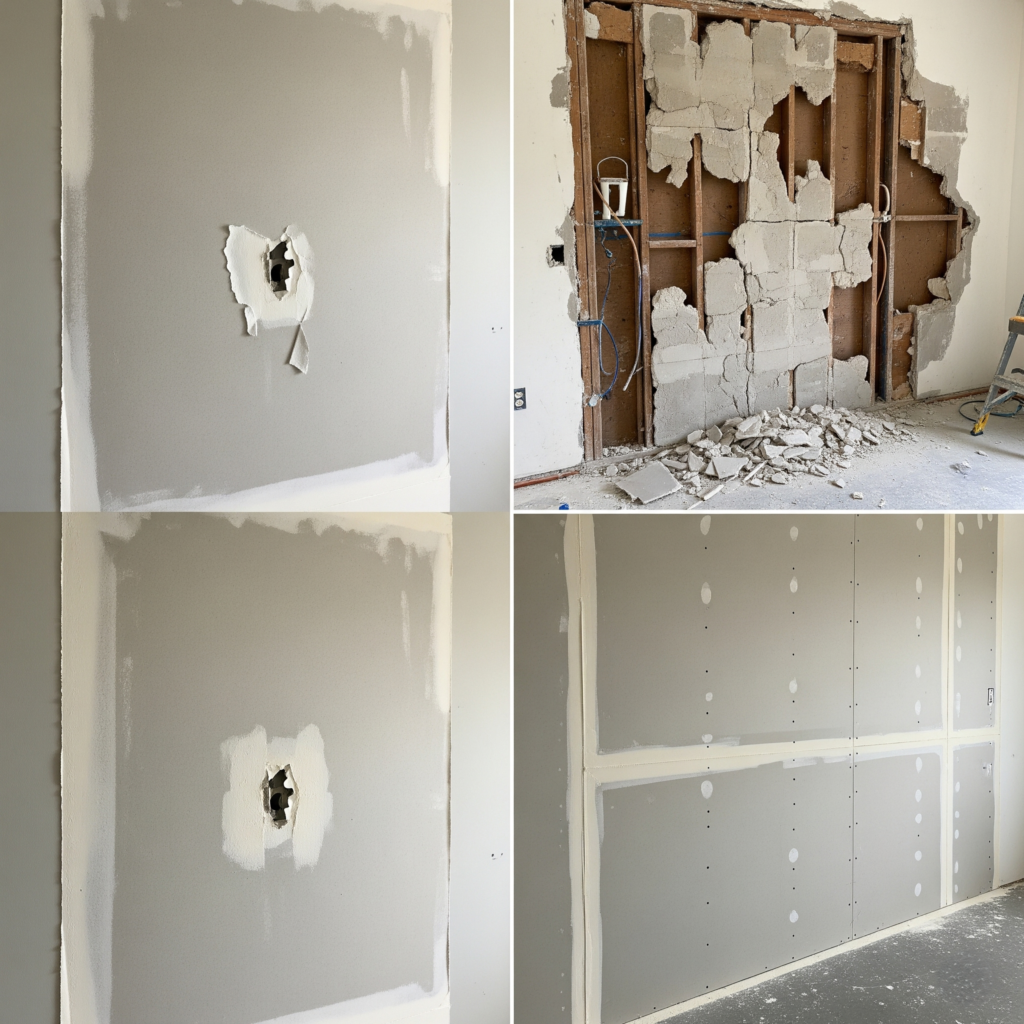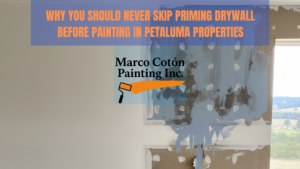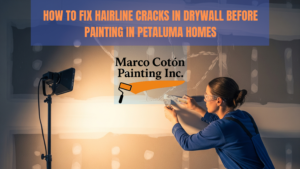Introduction
Drywall is a staple in most homes and commercial buildings. It’s lightweight, affordable, and easy to install, but it’s not immune to damage. From hairline cracks to severe water damage, drywall can deteriorate over time. The big question is: Should you repair or replace damaged drywall?
Knowing the difference can save you time, money, and future headaches. This blog will help you determine the right course of action based on the type and extent of the damage, budget, and long-term durability.

When to Choose Drywall Repair
Repairing drywall is often the most efficient and cost-effective solution, especially for minor to moderate damage. Here’s when a repair makes the most sense:
● Small Holes or Cracks
Dents from doorknobs, nail holes, or minor cracks due to house settling are easily repaired using spackle or joint compound.
● Water Damage (Minor)
If you’ve had a small leak or condensation problem that caused staining or slight bubbling, and the drywall hasn’t lost structural integrity, repair is possible after the area is dried and treated for mold.
● Surface Scratches or Dings
These are cosmetic issues that can be smoothed out and painted over without the need for replacement.
● Cost Efficiency
Repairs are generally quicker and cheaper. If only a small area is damaged, patching it is the smarter option.
Pros of Drywall Repair
- Less Expensive: Material and labor costs are significantly lower.
- Quick Turnaround: Most repairs take a few hours to a day.
- Minimal Disruption: No need to tear down walls or move large furniture.
When to Replace Drywall Completely
Sometimes, repair just won’t cut it. In cases where the drywall is extensively damaged, replacement is not only advisable, it’s necessary.
● Large-Scale Water Damage
If drywall has been soaked due to flooding or a burst pipe, it may harbor mold and lose structural integrity. In these situations, replacement is a must.
● Severe Cracking or Warping
Cracks wider than 1/4 inch or drywall that’s bowing outward often indicate deep structural issues that cannot be patched effectively.
● Mold Infestation
Once drywall becomes a breeding ground for mold, even after surface treatment, full replacement is the safest solution.
● Fire or Smoke Damage
Smoke-damaged drywall absorbs odors and chemicals. If you’ve experienced a fire, the safest option is to replace affected sections entirely.
Pros of Drywall Replacement
- Long-Term Durability: Ensures structural integrity for years to come.
- Health and Safety: Eliminates risks related to mold, mildew, or toxins.
- Better Finish: Offers a cleaner surface for paint or wallpaper.
Cost Comparison: Repair vs. Replacement
| Type | Average Cost per Sq. Ft. | Time to Complete | Best For |
|---|---|---|---|
| Drywall Repair | $1.50 – $3.00 | A few hours | Severe damage, mold, and water intrusion |
| Drywall Replacement | $2.00 – $4.50 | 1–2 days | Severe damage, mold, water intrusion |
While repair is cheaper upfront, choosing the wrong option can cost more in the long run if problems recur.
DIY vs. Professional Help
● DIY Repair:
Good for small fixes like nail holes, minor dents, or light cracks. With basic tools (spackle, putty knife, sanding sponge), you can complete a patch in under an hour.
● Professional Repair or Replacement:
Hire professionals for:
- Widespread damage
- Water or mold issues
- Seamless blending with textured walls
Pros have the tools and experience to ensure a clean, finished look, especially important for visible wall areas.
How to Decide: 5 Key Questions to Ask
- How large is the damaged area?
Small patch = repair; large damage = replacement. - Is there mold or moisture behind the wall?
Always replace if yes. - Does the damage affect wall stability?
If the wall feels soft or weak, choose a replacement. - How old is the drywall?
Older drywall might be brittle or contain outdated materials; consider replacing. - Is the wall surface flat or textured?
Smooth surfaces are easier to repair, while textured walls often look better after replacement for consistency.
Maintenance Tips to Extend Drywall Life
- Install door stoppers to prevent impact dents.
- Address leaks quickly to prevent water damage.
- Use humidity control in basements and bathrooms.
- Paint with mildew-resistant primers in moisture-prone areas.
Conclusion: Choose Smart Based on Your Wall’s Needs
Whether you should repair or replace drywall depends on the type and extent of damage, your budget, and the long-term condition of your walls. Minor issues can be patched quickly, but for serious damage like mold, water, or cracks, replacement is a better investment.
When in doubt, consult a professional to ensure your home stays safe, beautiful, and structurally sound.







